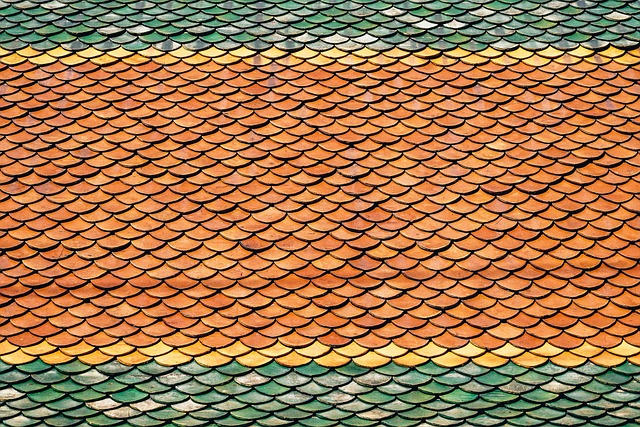Green roofing systems offer sustainable, aesthetically pleasing alternatives to traditional roofs, providing insulation, reducing energy consumption, and lowering costs. Eco-friendly materials like recycled metal, efficient tiles, and sustainable insulation improve thermal performance. Proper design with optimal insulation and ventilation reduces energy usage and carbon footprint. Case studies show significant advantages, including reduced energy consumption, enhanced insulation, and building longevity. Governments encourage adoption through incentives, offsetting installation costs. Choosing a reliable green roofing systems company ensures both environmental sustainability and pleasing aesthetics.
“Looking to slash energy costs and reduce your business’s environmental footprint? Green roofing systems offer a sustainable solution. This comprehensive guide is tailored for businesses exploring eco-friendly roofing, delving into the benefits, materials, design strategies, and real-world transformations.
Discover how these systems enhance insulation, ventilation, and overall building efficiency while navigating government incentives and choosing the ideal partner. Embrace a greener future with our expert insights on becoming an industry leader in sustainable practices.”
- Understanding Green Roofing Systems and Their Benefits
- The Role of Eco-Friendly Materials in Energy Efficiency
- Designing Roofs for Optimal Insulation and Ventilation
- Case Studies: Successful Green Roof Transformations
- Government Incentives and Tax Breaks for Sustainable Choices
- Choosing the Right Partner for Your Eco-Roofing Journey
Understanding Green Roofing Systems and Their Benefits

Green roofing systems are a revolutionary approach to traditional roofing, transforming ordinary structures into eco-friendly oases. These innovative systems involve planting and growing vegetation on top of buildings, offering a range of benefits that extend beyond aesthetics. By incorporating plants, green roofs provide insulation, reducing the need for energy-intensive cooling and heating. This simple yet powerful strategy can significantly lower energy bills for businesses, contributing to their overall cost savings.
Moreover, embracing green roofing systems aligns with the growing demand for sustainable practices. As a responsible business, adopting an eco-friendly roof demonstrates a commitment to environmental stewardship. With the right setup, these roofs can also help absorb rainwater, reducing strain on municipal drainage systems and promoting water conservation. This natural process not only benefits the local ecosystem but also contributes to a company’s sustainability goals, making it an attractive feature for environmentally conscious businesses.
The Role of Eco-Friendly Materials in Energy Efficiency

The choice of materials plays a pivotal role in the energy efficiency of any roofing system. Green roofing systems companies increasingly focus on using eco-friendly options that not only reduce environmental impact but also lower energy consumption. Materials like recycled metal, energy-efficient tiles, and sustainable insulation are being integrated into modern roofing designs. These alternatives offer superior thermal performance, reflecting sunlight and keeping buildings cooler during hot seasons, thereby reducing the need for air conditioning.
Living roofs, as another innovative concept, involve planting vegetation on top of structures. This not only adds a touch of greenery to urban landscapes but also provides excellent insulation. The layer of plants acts as a natural barrier, moderating temperature fluctuations and significantly decreasing energy usage associated with heating and cooling. As such, adopting eco-friendly roofing materials is a strategic move for businesses aiming to create sustainable roofs that contribute to overall energy conservation efforts.
Designing Roofs for Optimal Insulation and Ventilation

Designing roofs that offer optimal insulation and ventilation is a key strategy for any green roofing systems company aiming to reduce energy usage. By integrating smart design elements, businesses can create sustainable roofs that regulate indoor temperatures, minimizing the need for excessive heating or cooling. This not only translates to significant energy savings but also contributes to a reduced carbon footprint.
Eco-friendly roofing involves carefully considering materials and ventilation strategies. Utilizing reflective coatings on rooftops can help reflect sunlight, keeping buildings cooler during hot months. Additionally, proper ventilation systems ensure that warm air escapes efficiently while fresh air circulates, maintaining comfortable indoor temperatures year-round. This dual approach of insulation and ventilation is a cornerstone for any business looking to implement an effective eco-friendly roofing system.
Case Studies: Successful Green Roof Transformations

Many businesses are turning to case studies for inspiration, demonstrating the transformative power of green roofing systems. These successful transformations showcase how eco-friendly roofing isn’t just a trend but a viable and lucrative solution. Companies like [GreenRoofingSystemsCompany] have pioneered this movement, offering innovative designs that blend aesthetics with sustainability.
From industrial buildings to commercial complexes, these case studies highlight reduced energy usage, improved insulation, and enhanced building durability. The integration of living roofs has also led to increased biodiversity and better water management, proving that environmental responsibility and business success can go hand in hand. These examples serve as a call to action for other businesses to embrace green roofing, contributing to a more sustainable future while reaping the benefits of cost savings and improved property values.
Government Incentives and Tax Breaks for Sustainable Choices

Many governments worldwide are promoting sustainable practices, including offering incentives for businesses adopting eco-friendly roofing systems. These initiatives aim to reduce energy consumption and the carbon footprint of buildings, contributing to a greener future. One of the most significant benefits for green roofing systems companies is the availability of tax breaks and rebates. These financial perks encourage businesses to make the switch from traditional roofs to living roofs or eco-friendly roofing solutions.
By leveraging these government incentives, companies can offset the initial installation costs of sustainable roofs. This support not only accelerates the adoption of green roofing but also underscores a growing global trend towards environmental stewardship. As a result, more businesses are recognizing the value of investing in eco-friendly roofing, creating a positive feedback loop that benefits both the environment and the bottom line.
Choosing the Right Partner for Your Eco-Roofing Journey

Embarking on the journey to install a green roofing system is an exciting step towards sustainability, but choosing the right partner is crucial. When seeking a reputable green roofing systems company, consider their expertise in eco-friendly solutions and their track record. Look for professionals who understand that a sustainable roof isn’t just about aesthetics; it’s about reducing energy costs and carbon footprint.
A top-notch eco-friendly roofing provider will offer personalized options, ensuring your roof not only looks beautiful but also performs optimally in terms of insulation and water management. They should be able to guide you through the process, from design to installation, and provide ongoing maintenance support for your living roof.
